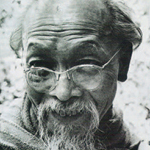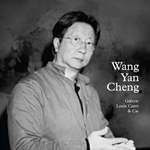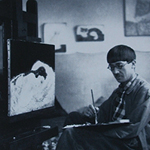NGUYEN GIA TRI
Nguyen Gia Tri belonged to the circle of former graduates from the Hanoi School of Fine Arts. In the mid 1930s, he met Madame Drouin, who gave him the support he needed to continuously produce work and begin a public career. In 1938, the Governor-General asked him to decorate his palace, a house currently belonging to the President of the Socialist Republic of Vietnam.
During the break-up of the French colonial system, his political commitment was significant; when his compatriots fought for their independence, he joined the Tu Luc Van Doan movement, famous for its anti-colonialist and nationalist prose
He experimented greatly in his lacquer work; while the motifs and designs are directly affiliated with the purest Vietnamese tradition, the technique is exploratory, influenced by Western oils on canvas.
He finally settled in Saigon after a five-year stay in Hong Kong, resisting the siren call of European metropolises to which many of his compatriots succumbed. His stylistic thinking and techniques drew him towards an abstract style after 1966, revolutionising his country’s ancestral lacquer work.
Our evaluation enables us to assert the pictorial and technical quality as well as the condition of a work before giving an evaluation of its historical and cultural interest. Advice may be given in terms of additional research to be conducted and also an estimate, whether the work is intended for auction or to be sold through another means.
Are you the owner of archival material or additional material on this artist or would you like an evaluation of one of your works? Contact us
More information by clicking on the photos
Are you the owner of archive material or additional material about Asian painters, or would you like one of your works assessed ? Contact us






















